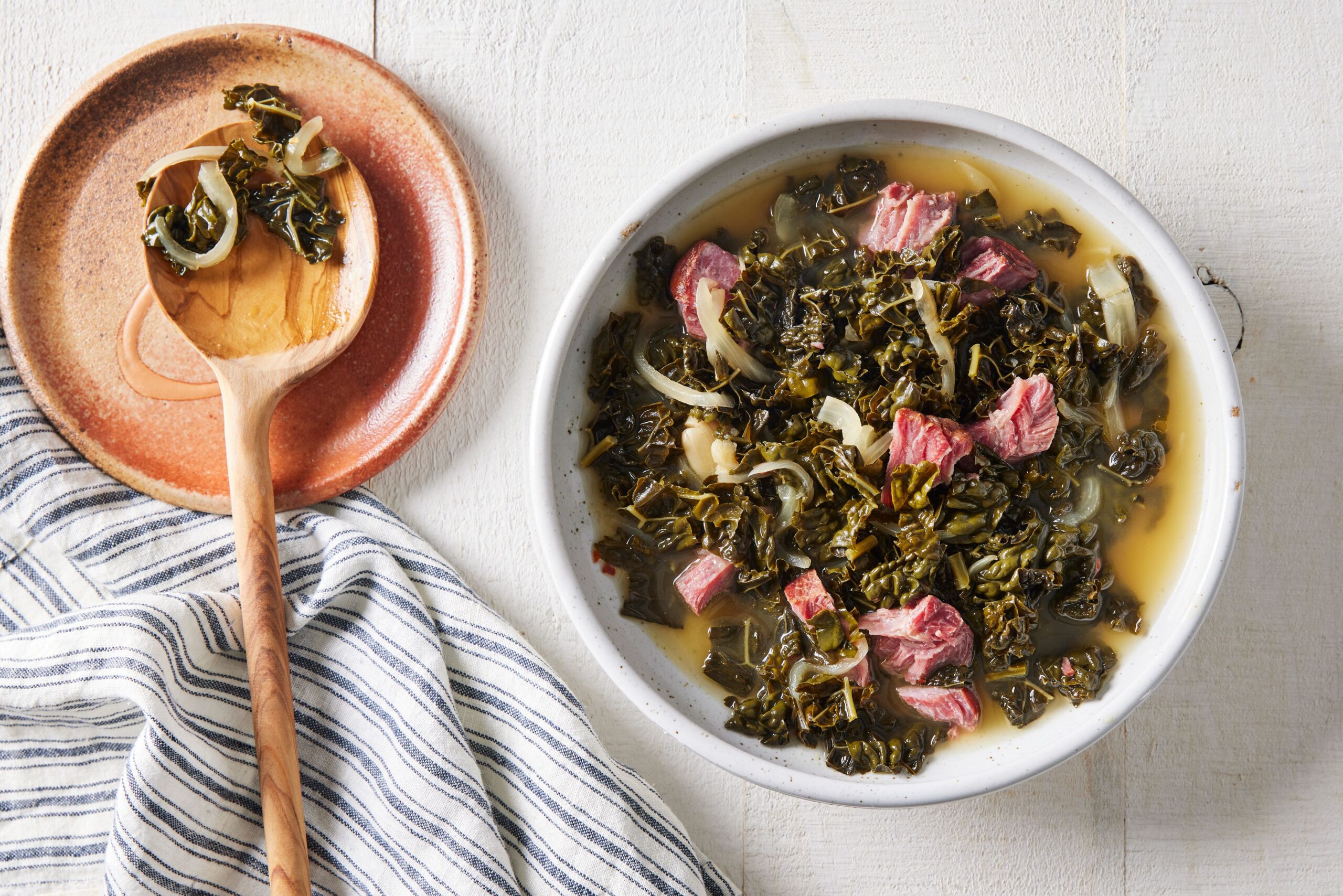
Although kale has been cultivated for more than 2,000 years, it seriously started taking off as something more than a garnish in the last 15 years or so. And for great reasons. Kale is an excellent source of vitamins A, C, and K as well as a good source of Vitamin and calcium. Kale is a member of the cabbage family and has a cabbage-like flavor. It thrives in cold climates and is in season during winter months, although it is available year-round and can be grown in warmer climes, too. Kale leaves are long and frilly, with a tough center stalk, and can vary in color and texture (more on varieties below). Similar to using spinach, kale is great for salads, soups, grain bowls, and more. They even make a crispy snack for an alternative to potato chips. Here you’ll learn how to cook kale three different ways for entrées or sides.
Selecting and Storing Kale
Before we can get to cooking kale, it’s important to know what to look for when choosing kale to buy.
- Opt for crisp, tender leaves that are richly colored and stems that are moist and fresh-looking. Avoid wilted or yellow leaves.
- Smaller leaves will be more tender and have a milder flavor than large leaves.
- Store unwashed kale in a storage bag for up to three days in the refrigerator. The longer you store kale, the stronger and more bitter the flavor becomes.
Types of Kale
There are three main types you’ll likely find in your grocery store:
- Curly kale: Ruffled leaves, fibrous stalk, and deep green color with the most pungent flavor of these three varieties.
- Ornamental kale: Mellow in flavor and more tender than curly kale. The leaves can be green, white, or purple. Also called salad savoy.
- Dinosaur kale: Dark bluish-green leaves on lighter stalks with pronounced texture and a slightly sweeter taste than curly kale. Also called Lacinato or Tuscan kale.
How to Prep and Clean Kale
To prepare kale properly for cooking, follow these steps:
- For large leaves, cut away the center stalk with a sharp knife. You can cut away just the base for smaller, more tender leaves. Trim any bruised leaves.
- Wash thoroughly in cold water several times, and drain well on paper towels or spin in a salad spinner.
- To prep, tear or chop into pieces; 12 ounces kale equals about 12 cups torn (about four servings).
Test Kitchen Tip: Cleaning kale thoroughly in cold water (multiple times, if needed) is key because the green can be gritty if not washed well.
How to Boil Kale
In a large saucepan bring about 2 cups of water and a pinch of salt (⅛ to ¼ tsp.) to boiling. Add 12 ounces torn kale. Return to boiling. Reduce the heat and simmer 20 to 25 minutes or until tender. Drain.
How to Sauté Kale
In a large skillet heat 4 tsp. olive oil. Add 12 ounces lacinto or curly kale. Cook, covered, for 1 minute. Uncover and cook and stir for 1 minute more or just until wilted. If desired, season the sautéed kale with salt and pepper and a squeeze of lemon juice. For more flavor, try sautéing kale with sausage in this stuffed delicata squash recipe.
Jason Donnelly. Food Styling: Holly Dreesman
How to Slow-Simmer Kale
A lot of your favorite soup recipes would benefit from adding a handful or two of kale to the pot. Simply prep your kale and allow it to simmer in the broth for the last 10 minutes (at least) before serving so the leaves have time to get nice and tender.
How to Make Kale Chips
It’s easy to make kale chips for a healthy snack. Place 2 cups torn kale leaves on a baking sheet lined with parchment paper. Brush with 1 Tbsp. olive oil and sprinkle with ¼ tsp. salt. Bake in 300˚F oven 20 to 25 minutes or until crisp. You can also season with your favorite spice mixes.
Cooking kale completely unleashes its possibilities (and releases most of its bitterness). Whether it’s kale in soup, roasting kale, or making a kale frittata, there are tons of delicious kale recipes that prove the green is great for more than just kale salad. And if you need another way to enjoy raw kale, you should throw some leaves in your smoothies and smoothie bowls (or even blended margarita!) for a healthy green boost.
